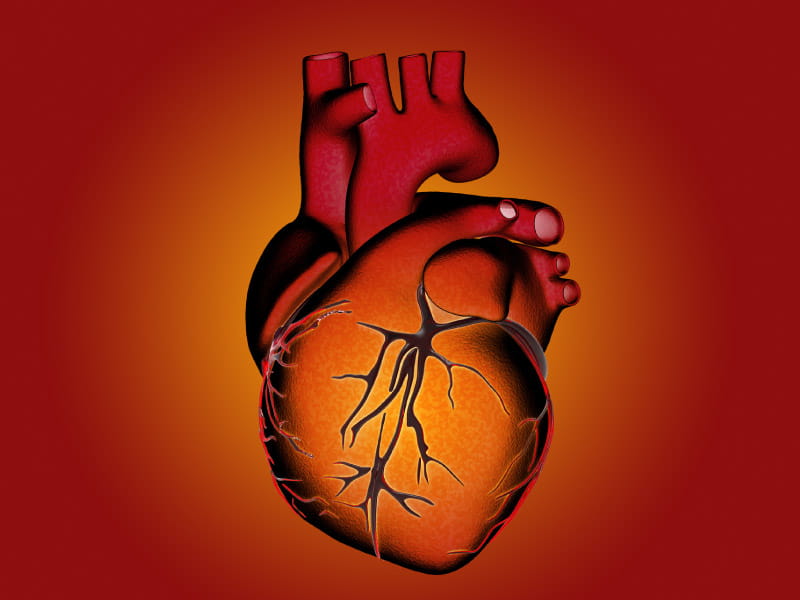What is a heart attack? Cardiologists explain the condition following death of NBA coach
By Deborah Lynn Blumberg, American Heart Association News

Golden State Warriors assistant coach Dejan Milojević died recently after a heart attack. Although most heart attacks happen in older people, younger people can experience them as well. The coach was just 46 years old.
Here's an explanation of heart attacks at any age, and what happens when you have one, according to cardiologists.
In a healthy heart, blood flows through tubes called arteries and delivers needed oxygen to the heart. But fat, cholesterol and other substances, collectively known as plaque, can build up inside heart arteries. When the plaque ruptures, it exposes the underlying tissue to the blood, causing a clot to form at the site of the rupture. Clots can block the oxygen-rich blood that needs to flow through the artery to the heart.
You might not notice this right away since nearby blood vessels that serve the heart can expand to compensate, said Dr. Karen P. Alexander, a cardiologist at Duke University Medical Center in Durham, North Carolina.
But when a heart – also known as coronary – artery narrows more than 70%, it's common to feel chest pain since the heart tissue needs more oxygen than it's getting.
When part of the heart muscle dies or gets damaged because it hasn't received enough oxygen, that's called a heart attack, or myocardial infarction. Each year in the United States, 605,000 people have their first heart attack and another 200,000 have their second or even third, according to American Heart Association statistics.
That's why it's critical, Alexander said, to follow healthy habits like eating a well-balanced diet and getting regular exercise to prevent plaque buildup in the first place. But even with a healthy lifestyle, heart attacks can happen.
Less often, heart attacks are caused by a severe spasm of a coronary artery, coronary embolism or other condition that decreases or stops blood flow to part of the heart. Another rare cause of heart attack is spontaneous coronary artery dissection, or SCAD, when blood flow is blocked because of a separation, or tear, in the lining of the coronary artery wall.
The most common symptom of a heart attack is discomfort or pain in the center of the chest that feels like squeezing, aching or burning that often radiates up to the neck, shoulder and jaw, and down to the left arm. It can be sudden or start slowly.
People might also have pain or discomfort in their neck, jaw, back, stomach or arms. Shortness of breath, cold sweats, nausea or lightheadedness can be symptoms as well. Heart attack symptoms can vary between men and women, with women sometimes experiencing the less common symptoms.
And while heart attacks do happen more often in older people, younger people can – and do – have them, too. AHA statistics show that men ages 20-59 account for 4% of heart attacks; for women in the same age range, it's just over 2%.
"Many young people who survive these unexpected heart attacks later reveal they had a little bit of a forewarning," Alexander said. "Some may have a warning cluster of events 12 to 24 hours before." Pay attention to any new symptoms, she said, or an unusual sense of fatigue before chest pain.
If you experience any warning signs of a heart attack, don't wait to get help. Call 911 right away.
"The mistake I see is people try to drive themselves to the hospital or they minimize symptoms and say, 'I'll talk to my doctor next week,'" Alexander said. "If there's an emergency, that's what EMS is for. We'd rather see people more than less if they're concerned that something might be going on."
Calling emergency medical services ensures someone having a heart attack can get treatment right away. And because a heart attack is a common cause of cardiac arrest, EMS also can provide resuscitation to someone whose heart has stopped.
Although people sometimes confuse the two, a heart attack is different from a cardiac arrest. A heart attack is a plumbing issue, while a cardiac arrest is an electrical one. The plumbing problem causes an electrical glitch, and the heart's electricity essentially goes out.
"Not all heart attacks will end up in cardiac arrest, but many of them will," said Dr. Jorge Saucedo, a cardiologist and director of heart and vascular services at Froedtert & the Medical College of Wisconsin health network in Milwaukee.
He said people who witness a cardiac arrest should call 911 and start CPR by pushing hard and fast in the center of the chest at 100 to 120 beats per minute. "Start it as soon as possible. Do not hesitate," Saucedo said.
To reduce the risk of a heart attack, everyone should know their blood pressure and cholesterol numbers, not smoke and be physically active, he said.
A helpful tool, Alexander said, is the AHA's Life's Essential 8, a checklist of key measures for improving and maintaining cardiovascular health that includes getting enough sleep and managing weight and blood sugar.
"The bottom line is, lifestyle matters a lot," she said.




